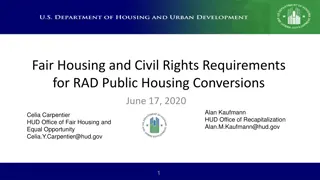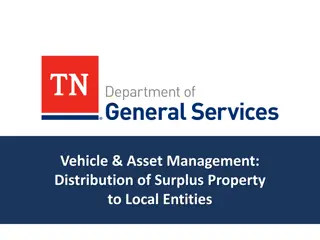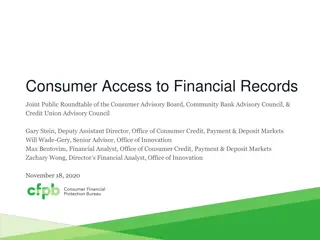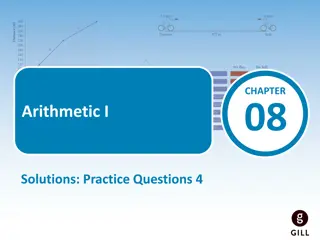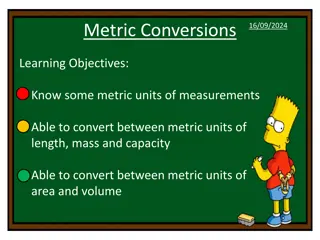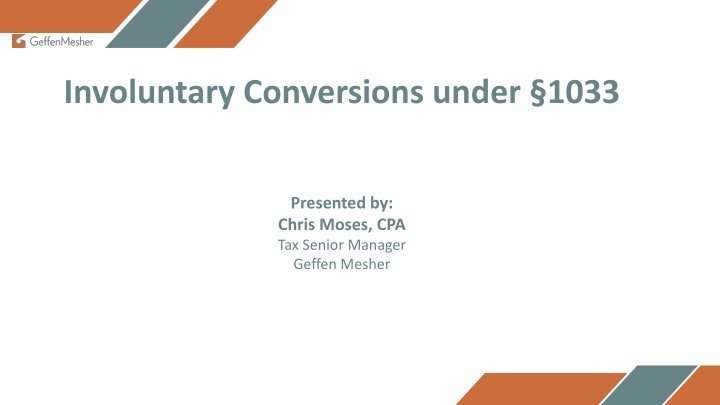
Involuntary Conversions Under Section 1033
Learn about involuntary conversions under Section 1033, including events, replacement property, gain deferral, and more. Discover how to defer gains from property conversions and the specific rules applicable to real estate conversions.
Download Presentation

Please find below an Image/Link to download the presentation.
The content on the website is provided AS IS for your information and personal use only. It may not be sold, licensed, or shared on other websites without obtaining consent from the author. If you encounter any issues during the download, it is possible that the publisher has removed the file from their server.
You are allowed to download the files provided on this website for personal or commercial use, subject to the condition that they are used lawfully. All files are the property of their respective owners.
The content on the website is provided AS IS for your information and personal use only. It may not be sold, licensed, or shared on other websites without obtaining consent from the author.
E N D
Presentation Transcript
Involuntary Conversions under 1033 Presented by: Chris Moses, CPA Tax Senior Manager Geffen Mesher
Table of Contents Overview of Involuntary Conversions Events of Involuntary Conversion Specific to Real Estate Types of Replacement Property Making the election for gain deferral Replacement period Conclusion
Overview of Involuntary Conversions What is it? Allows gain from certain conversions of property to be recognized or deferred at the taxpayer s election. An involuntary conversion result from Destruction Theft Seizure Requisition or condemnation; or Sale made under threat or imminence of requisition or condemnation Property converted to similar use or related property through an exchange receives nonrecognition of gain
Overview of Involuntary Conversions Cont. Replacement property Similar or related in service or use to converted property. Certain real property may be instead be of like kind to the property converted and still qualify for deferral. Complete Deferral Available only when the entire amount of monetary proceeds are reinvested. Partial reinvestment of proceeds will result in gain recognized to the extent of nonreinvestment. 1033 does not apply to losses.
Events of Involuntary Conversion Specific to Real Estate Destruction of Property - Common examples may include fire and natural disasters Destruction need not be sudden, but also applies to progressive deterioration over time. Legislative history and IRS rulings will use destruction interchangeably with casualty . Casualty used under 1033 does mean the same is it does under 165 Destruction occurs beyond taxpayer s control Partial Destruction of Property More complex treatment depending on facts and circumstances
Events of Involuntary Conversion Specific to Real Estate Requisition or Condemnation - the compensable acquisition of an estate in property by a governmental or quasi-governmental entity for public use Key is acquisition of property, where control will transfer from taxpayer to governmental entity, permanently Heavily litigated area, many PLR s, revenue rulings and court cases available Temporary Condemnation Payments made for temporary use of property is treated as ordinary income, nature of payments constitute rents. Example: Local government pays client to store their machinery on their land while constructing a road adjacent to property.
Events of Involuntary Conversion Specific to Real Estate Threat or Imminence of Condemnation Exists if the property owner is informed by a reliable source that an entity with authority to condemn has decided to acquire the property Reasonable grounds to believe the condemnation will be carried out. Initial contact for voluntary sale Taxpayer should contact entity and determine if entity plans to exercise condemnation authority Once threat or imminence exists, may sell property
Types of Replacement Property Similar use property 1033(a)(1) Stock of a corporation owning similar use property 1033(a)(2) Property that is like-kind 1033(g) and In certain cases, farm property 1033(f)
Types of Replacement Property Similar use property 1033(a)(1) similarity in the relationship of the services or uses which the original and replacement properties have to the taxpayer-owner An additional four-part standard in Maloof v. Commissioner Examples of similar use property Improvements to industrial property replace agricultural property Apartment building replacing leased filling station or office building Examples of property NOT similar in use Improved real estate replacing unimproved real estate Reduction in mortgage indebtedness replacing real property Interest in real estate investment trust replacing lease commercial building
Types of Replacement Property Like-kind property Certain real property be replaced by like-kind property. Must be held for productive use in trade or business. 1033(g) specifically applies to the following conversions Seizures Requisitions and condemnations Sale on account of threat or imminence of requisition condemnation Real property destroyed does not qualify under 1033(g) Overlaps with 1031 in determining what property is considered like-kind .
Making the election When does the election need to be made? Timely filed return. Applies to years in which any portion of the gain is realized. How is the election made? Form 4684 May also need 4797, Schedule D, C and/or F depending on activity. Supplemental statement attached to return. Example - A client s apartment building that was used in a trade or business was destroyed in a fire in June 2023. Their insurance company paid $2M in total proceeds. The client received $1.5M in December 2023, and the remaining $500K in February 2024. The client will need to include election statements with their 2023 and 2024 return filings.
Replacement Period Similar Use Property Earliest date of replacement is either The conversion date or The date of threat or imminence of condemnation End date of replacement Two years after the close of the first tax year in which conversion gain is realized. Example - The client s building was destroyed in a fire in June 2023. The client is a calendar year taxpayer. Since the client received $1.5M in insurance proceeds in 2023, this is the first tax year in which conversion gain is realized. The close of the first tax year is 12/31/2023. Add two years to this date, and the client has until 12/31/2025 to acquire qualified replacement property for deferral under 1033.
Replacement Period Like kind property Earliest date of replacement is either The conversion date or The date of threat or imminence of condemnation End date of replacement Three years after the close of the first tax year in which conversion gain is realized. A four-year replacement period applies to principal residence located in a federally declared disaster area
Replacement Period Notification of Replacement/Nonreplacement Attached to return for tax year(s) in which replacement/nonreplacement occurs. Can be done on amended return if original return did not contain notification. Failure to notify IRS will result in those years to remain open indefinitely for assessment of deficiency. Consequences of Nonreplacement Gain that would have been deferred becomes full recognizable in the years it was realized, not in the year the failure to replace occurs. Amended returns for realized gain year(s) must be filed, interest assessed on any tax deficiency.
Concluding Thoughts Important to understand categories of conversions Similar use conversions are generally the result of destruction of property Like-kind conversions are limited to real property subject to seizures, requisition or condemnation, and threats or imminence Understand replacement periods for each conversion event






